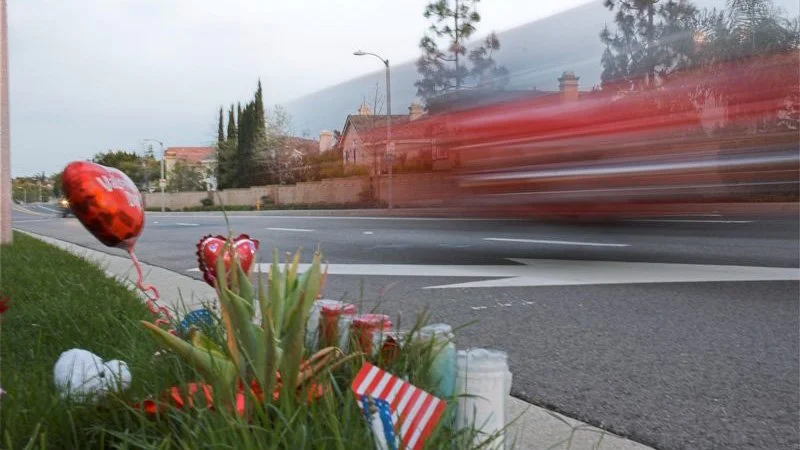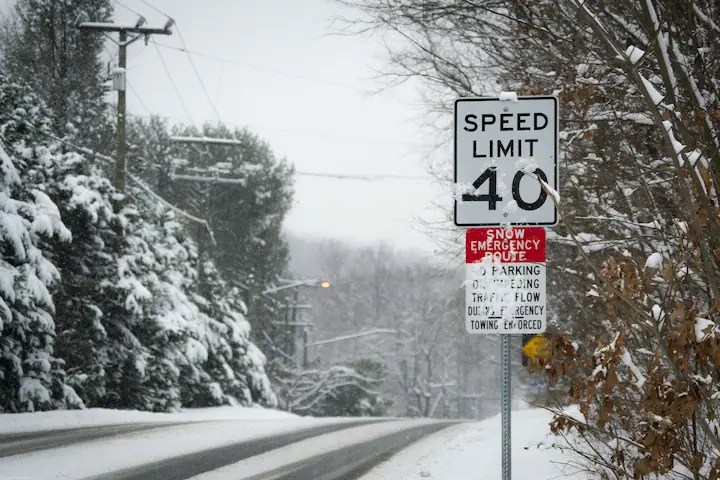Editor's Note: The challenges our cities face are growing, but so is the strength of this movement. Every story we share, every idea we spread, and every tool we build exists because people like you are committed to showing up. Your membership isn’t passive—it’s the momentum that makes change possible.
There are many misconceptions in my local conversation about what does or does not induce motor traffic. Some of these misconceptions are:
- Single family homes do not increase traffic. If all we build are single-family homes, this will forever stay a quiet neighborhood.
- Commercial development does not increase traffic, because it does not add more residents.
- Congestion is bad, and we should treat avoiding it as a priority.
Let's dive into it: traffic, what causes it, and what we can do about it.
The Role of the Street Network
The largest contributor to congestion is the hierarchical road network. This is where you have local streets feed into collectors that feed into arterials that feed into highways.
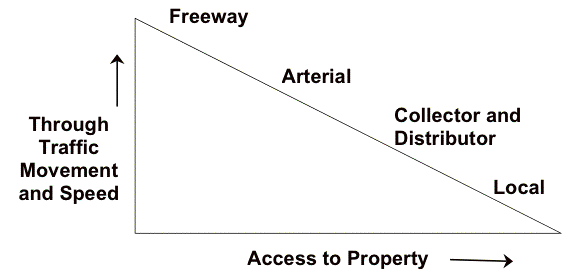
The Strong Towns article on Dealing with Congestion explains why this is bad. We are funneling all traffic through a small number of streets, giving us a lower vehicle capacity as well as fewer redundancies for when things go wrong (creating a fragile road network where one clog can grind traffic to a halt), and artificially spaces things out by reducing what you can reach in a given distance (sometimes stupidly so as in the case where two houses share a backyard despite their front doors being 7 miles apart).
A highly connected street network (this can mean a grid, but can also take non-geometric forms such as the street network of a medieval city) is better because there are a ton of redundancies (a street closure does not matter if you have countless alternative routes from A to B) and distances are shorter as you can take a more direct route from A to B. Because the load is distributed over the many redundancies, we are no longer funneling all of the traffic over a small handful of collectors or arterials, so you are going to encounter less traffic along your way, even if all else (population density, amount of travel) remains equal.
Designating a main thoroughfare, with higher speed and greater capacity, to funnel traffic through is bad, even if it is part of a street grid. This thoroughfare will attract all of the traffic until it is so congested that it no longer offers a speed advantage over alternative routes (such as parallel side streets), and all people will do is complain how congested it is. This holds true any time we deal with funneling a flow: getting all cars to take the same road, asking all spectators to leave through the same stadium door after a sports game, making all travelers at the airport to go through a single security line, pushing all commuters onto a single transit line, getting all permit approvals to flow through a single queue, and so on. It does not take many people for it to feel crowded when everyone is concentrated in one place.
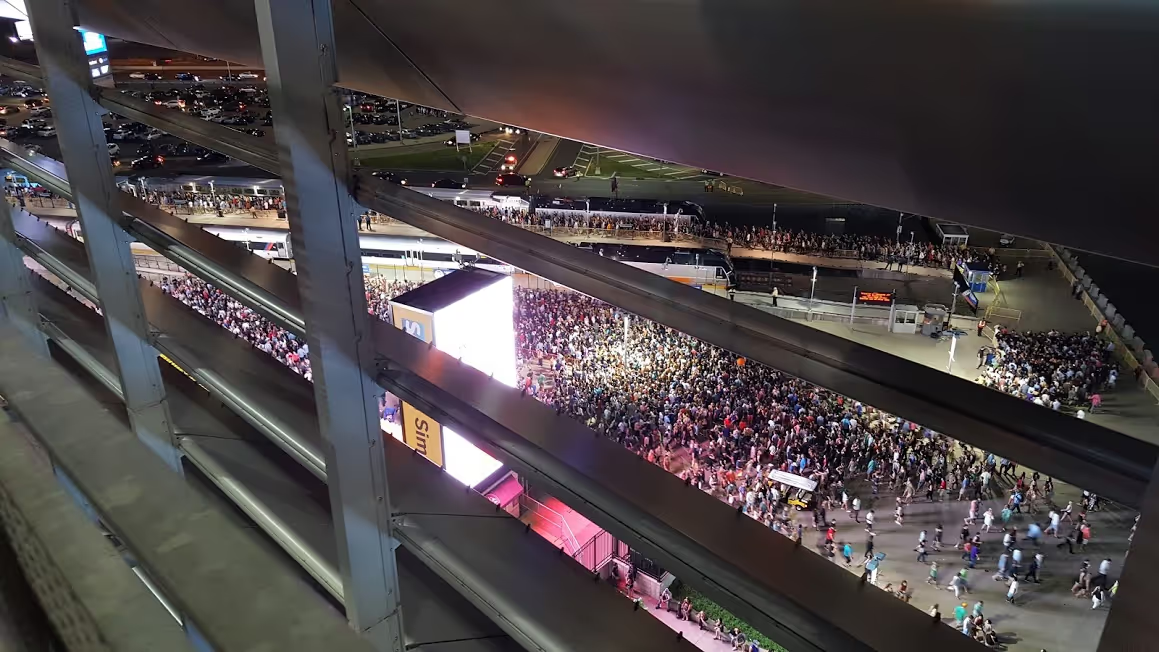
The Role of Land Use
Let's look at land use. It is true that not having anything will attract no traffic (there is nobody living there and nowhere to go, so there will be no traffic), thus building anything will increase traffic. But the correlation between the amount of activity in a place (residences, businesses, and other destinations) and the traffic it produces is not linear.
The trick comes down to building complete neighborhoods. A complete neighborhood is one where you can get most of your needs within walking distance. Transitioning to a complete neighborhood reduces motor traffic because of import replacement.
Import replacement refers to the practice of replacing a good or service that you used to get elsewhere with a local good or service. Import replacement takes many forms. The word ‘import’ makes me think of foreign trade, so the first thing that comes to mind when I hear ‘import replacement’ is replacing imported washing machines from China with domestic washing machines. However, import replacement can occur at different levels (all the way down to the neighborhood), and can refer to the replacement of non-physical goods. For example, a small town might not have its own advertising agency, so local businesses have to use the services of an advertising agency in a larger city. But, as that small town grows, it is likely that local businesses (such as advertising agencies, law firms, doctors’ clinics, building contractors, shops, and restaurants) will emerge and residents can avoid traveling to the next town over.
Let’s look at a specific example. If a city does not have a Mexican restaurant, its residents, if they want Mexican food, are required to travel 20 miles to the next town. But, Mexican food is popular so the residents make the trek. The city decides to open its own Mexican restaurant. Now, if you want Mexican food you only have to make a 2 mile trip instead of a 20 mile trip. So, you could argue there are more cars in the city (since the cars are not leaving for the next town over), but you are going to encounter less traffic for two reasons:
- You are only traveling 2 miles and not 20 miles, so you’re going to spend less time in your car and dealing with traffic.
- If your town has some form of a highly-connected street network (such as a street grid or an organic mesh), it will better distribute the load of traffic than funneling everyone through a few regional connections between the cities.
Let’s go one step further. If a Mexican restaurant opens 3 blocks from where we live, do we even need a vehicle (car or transit) to get to the Mexican restaurant? Would it not be easier just to walk or ride a bike? And save dealing with parking or waiting for the bus/train for those longer trips?
I love Strong Towns’s party analogy. Imagine that you are hosting a party outdoors at a park. Everyone who attends is required to bring more food or drink than they consume. If someone showed up, you would say, “Come on in!” because the more people, the more food, the better the party. This is a Good Party. Now imagine the opposite. You are providing the food and drink, the more people who show up, the less there is to go around (or the more you are spending). If someone unexpected shows up, you would send them away, because the more people, the worse the party. This is a Bad Party. A Good Party gets better with more people. A Bad Party gets worse with more people.
In terms of traffic, if you keep your land uses segregated, especially at car-scales, with your residents in one area and your businesses in another area, the more people you add, the more traffic there will be as more people travel between the two sides. This is a Bad Party. You do not want more people. You do not want more traffic.
On the other hand, if your city allows a mixture of uses within neighborhoods, then the more people who show up, the more likely it is that you will get that Mexican restaurant 3 blocks from you, as well as other amenities. This is a Good Party. The more the merrier.
Several years ago I made a Zoning and Traffic simulator where I measured the effect of traffic and land uses. My take away from that is:
1. Separating land uses generates congestion.
2. Cities have a tendency to order themselves so that the most dense stuff is in the middle, and the least dense stuff is around the outside, and this results in less congestion and shorter average commute times.
3. A heuristic approach (letting the free market optimize itself through trial and error) works quite well, and can cut commute times in half and results in less congestion. If this fails and you end up with randomized land use, then you end up with slightly shorter commute times and significantly less congestion than segregating land uses anyway.
The Role of Density
By building Complete Neighborhoods, we can approach high population densities with little motor traffic. For example, Hoboken, where I live, has a population of about 40,000 people per square mile, and yet even during rush hour, our main street, Washington Street, has very little traffic. There are still people who drive to work—either they commute a long distance off the beaten path of transit or they are contractors who have a van full of tools—but transit, walking, and cycling are serious modes of transportation only because we’ve built and connected together complete neighborhoods.
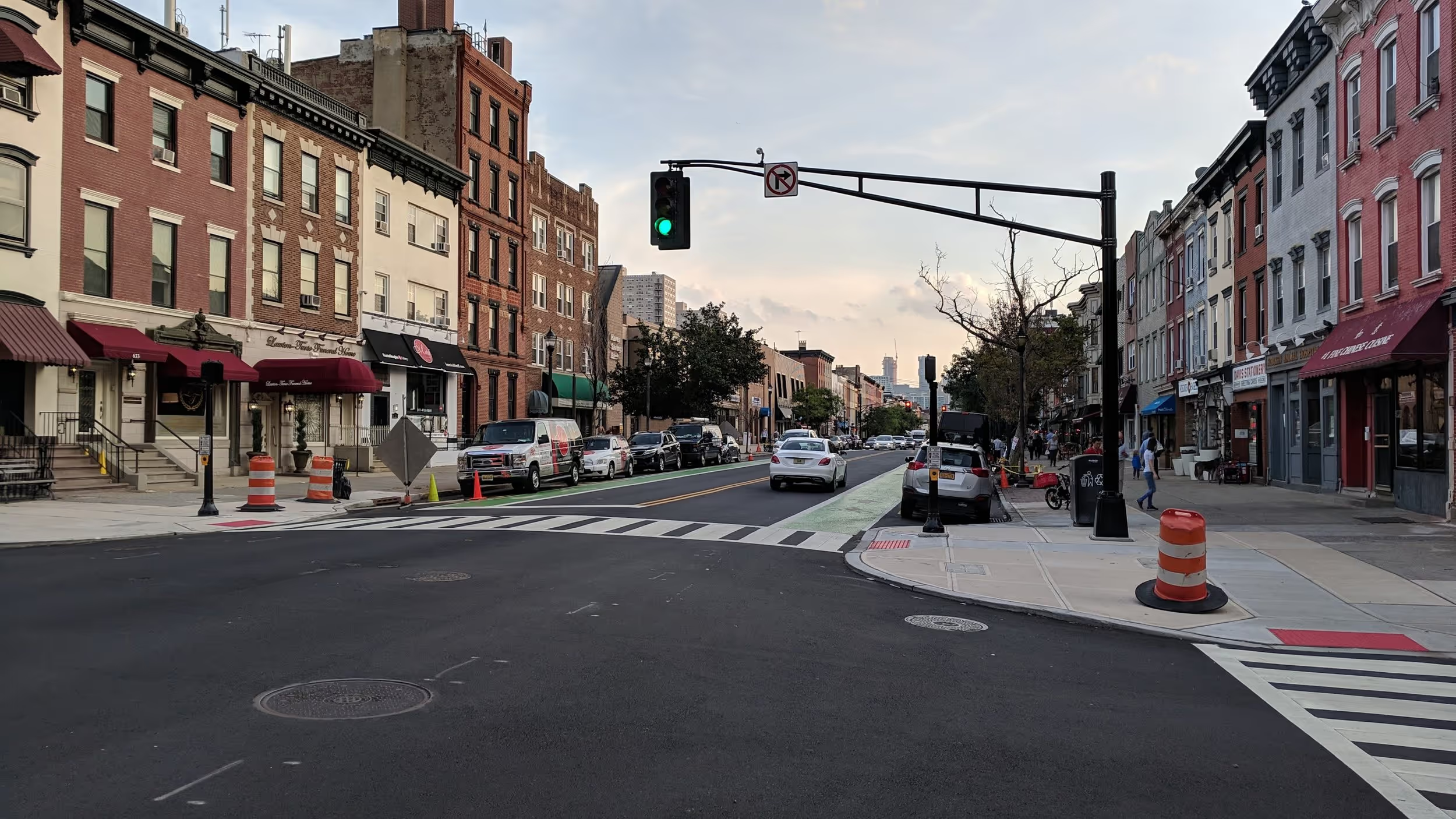
Let's look at an extreme case—Manhattan—which is an island of complete neighborhoods (some of which reach population densities up to about 151,000 people per square mile). Cars only account for 6% of trips in Manhattan (this number from NYCDOT excludes the northern area of Manhattan above Central Park). I am not under the illusion that Manhattan has no motor traffic or that by doing everything right you can eliminate all traffic. But observing traffic in Manhattan, I notice several interesting properties:
- A typical residential street does not have that much traffic.
- When there is traffic, at least half of the non-parked vehicles are commercial vehicles (cars with Uber stickers on their window, taxis, buses, garbage trucks, delivery vans, etc.)
- Traffic seems to be the heaviest when it gets concentrated on designated thoroughfares such as 11th Avenue.
- Traffic lights create an illusion of congestion because they create synchronization barriers that cause vehicles otherwise spaced apart to cluster together (and then continue on travelling as a cluster). I don't like traffic lights.
Above is a video of the traffic at the intersection of Manhattan's 10th Avenue and 23rd Street at lunch. Not bad for a neighborhood of 145,000 people per square mile.
One thing we can say with a high degree of certainty is that if Manhattan did not have a subway system or was not made up of complete neighborhoods, traffic would be far worse if we had an additional 5.6 million daily car commuters on the street, not to mention all the small trips done on foot (such as walking to the doctor, shopping, or going out to eat) that would be otherwise done in a car. Once you reach this point where Manhattan is today, there is not much you can do, in regards to the development pattern, to reduce traffic. But the vast majority of American cities are not at this point.
Another way we can work to reduce vehicular traffic is to simultaneously disincentivize driving by taking away space from cars (travel lanes, parking) or congestion pricing, while incentivizing other modes (expanding the transit system, expanding bike sharing, etc.) enough that these other modes become the more convenient choice.
Is congestion really a problem?
At the end of the day, we should not worry too much about congestion or traffic. Congestion is part of the solution, not the problem. Congestion is feedback that we have built a place people want to be. The response to congestion should be to allow that Mexican restaurant to open up 3 blocks away rather than 2 miles away. To create bus lines and bike lanes that give people alternative ways to get around. The incorrect response to congestion is to build faster and wider streets, because that just reinforces car dependency and all of the negative consequences that come with it.
To summarize:
- Development can add traffic. However, development that brings amenities and people closer together and reduces the need to travel so far can actually reduce traffic. With a mixture of uses, you can achieve a high population density with very little motor traffic.
- A highly-connected street network (either a street grid or organic) with many redundancies better distributes the load of traffic and is more resilient to disruptions.
- Designated thoroughfares and bypasses create an illusion of traffic because they funnel the traffic through a single point (and with this comes the fragility of a single point of failure that can bring down the system).
- Attempting to address congestion with solutions that make it easier to drive can make the problem worse by continuing to make the car the preferred way to get around.
- We should not worry too much about congestion, because it creates demand for other modes of transportation and for amenities to be closer.




